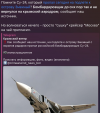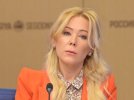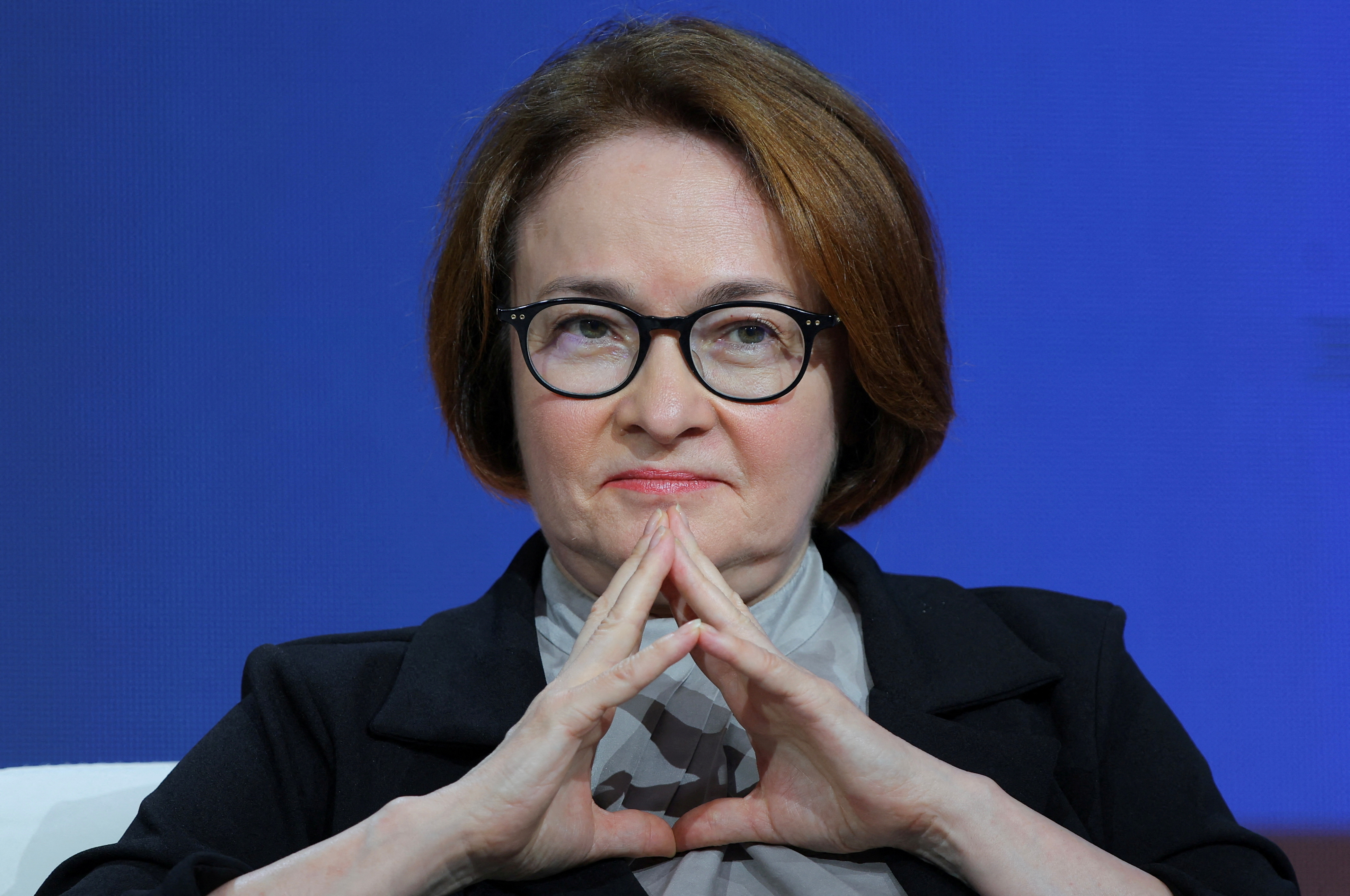https://meduza.io/feature/2024/01/2...hto-skoro-zakonchatsya-resursy-na-chernyy-den
During the two years of war, Russia spent half of the money from the main “pot” - the National Welfare Fund. Will the country soon run out of resources for a rainy day?
07:05, 23 January 2024
Source: Meduza
Maxim Shipenkov / EPA / Scanpix / LETA
The Russian Ministry of Finance last week
reported on the management of the National Welfare Fund (NWF), the main source of resources for a rainy day. At the end of 2023, almost four trillion rubles were spent from the National Welfare Fund, and now only five trillion remain in its so-called liquid part. Meduza studied where the money was spent and what economists are now saying about the prospects for depleting the fund, which has helped Russia out during crises since 2004.
What did the Russian authorities spend so much money on during the war?
To answer this question, it’s worth going a little deeper into history. The system of reserve funds, which Alexey Kudrin created as Minister of Finance, was initially
designed to reduce the dependence of the Russian economy on commodity prices. According to the idea, if oil was expensive, then the authorities were supposed to buy foreign currency and put it aside for the future in the Stabilization Fund - as the National Welfare Fund was previously called. If oil became cheaper, the accumulated currency was allowed to be spent, primarily on
pensions .
What kind of operations to carry out with the National Welfare Fund is determined by the budget rule. Every year the government sets the so-called cut-off price for Urals oil: before the start of the war with Ukraine, for example, it
was $45. If the cost of a barrel turned out to be higher, the Central Bank, on behalf of the Ministry of Finance, bought dollars, euros, yuan and gold from the National Welfare Fund.
However, after the invasion of Ukraine and the imposition of sanctions on Russian oil, which included both a price ceiling and restrictions on direct supplies of raw materials to the West, the price became too volatile (that is, subject to sharp fluctuations in value). The ruble exchange rate has also become less predictable.
As a result, the old budget rule was canceled, and a new one was invented for 2023 : it was tied not to the cost of oil, but to the required volume of oil and gas budget revenues. Now reserves can be replenished if the treasury receives eight trillion rubles per year from the sale of raw materials.
Throughout the first half of 2023, Russian oil
was trading at a discount (that is, a discount in relation to other brands), the ruble exchange rate was relatively strong, so the required volumes were not received - and the currency from the National Welfare Fund was sold. The Ministry of Finance received rubles as compensation.
In the summer, the situation changed: prices rose, the ruble weakened - and the authorities were finally ready to replenish the money. The Ministry of Finance
reported that it would begin purchases on August 7, but this never happened. After Yevgeny Prigozhin’s rebellion, the dollar exchange rate soared to 100 rubles, and additional demand for the currency would have accelerated the devaluation even more, so the Central Bank simply
refused to carry out the transactions. The budget rule, in fact, stopped working; the National Welfare Fund was not replenished.
Meanwhile, the Ministry of Finance had a busy year in terms of expenses - primarily, naturally, due to the need to finance military needs. The articles “National Defense” and “National Security”
increased by 60% compared to 2021. As a result, budget spending
exceeded the legal norm by three trillion rubles and reached 32 trillion.
The budget deficit also turned out to be higher than expected . The authorities have been placing federal loan bonds all year and thus
borrowed 2.5 trillion rubles. In addition, new
taxes were invented and collected . The Ministry of Finance was also lucky with non-oil and gas revenues, which turned out to be
better than forecast.
But this was not enough - so in December the Ministry of Finance
sold half a billion euros, 115 billion yuan and 232 tons of gold from the National Welfare Fund , and took the resulting 2.9 trillion rubles to cover the deficit. This is the maximum
allowable amount for 2023. As a result, the liquid part of the National Welfare Fund was reduced to five trillion rubles, although before the start of the war
it was almost nine trillion. The MMI telegram channel
states that this amount will no longer be enough for a new crisis on the scale of 2020 or 2022.
What is the liquid part of the National Welfare Fund? It turns out that the fund consists of more than just her?
That's right, the liquid part of the National Welfare Fund is called only savings in currency and gold - because these assets are easy to spend if necessary.
The total volume of the National Welfare Fund at the end of 2023 was estimated at 12 trillion rubles (this amount over the year decreased not so significantly - by only 12%), and most of this amount is illiquid. Its logic is that money accumulated during periods of expensive oil needs to be invested, otherwise inflation will devalue it, so the state periodically buys shares and bonds of Russian companies. In 2023, another trillion rubles
were spent for these purposes.
The Ministry of Finance website
says that the fund's strategy is conservative , and investments are focused on long-term income. But in fact, in recent years, the Ministry of Finance has simply been rescuing strategic enterprises that, for one reason or another, found themselves in a difficult situation. Although formally we are talking about investments on a return basis.
A striking example is the airline industry. Before the war, Russian airlines typically leased Boeing and Airbus from foreign suppliers. Due to sanctions, contracts were suspended, the owners demanded the return of the aircraft, but the carriers refused. In such conditions, any flight outside Russia could end in the arrest of the aircraft, but the National Welfare Fund
allocated 300 billion rubles to buy back the aircraft - and the risk was removed. The fund will also
pay for the purchase of new Russian MS-21 aircraft,
the production of Tu-214 and even
the assembly of helicopters. Market participants have already realized that they are not sparing money on the sector, and have proposed
to upgrade the infrastructure of airfields at the expense of the National Welfare Fund.
Previously, the authorities had to
recapitalize Aeroflot, which fell under sanctions, as well as the monopolist of railway transportation, Russian Railways. In 2022, the latter
received 250 billion rubles; in 2023, the company
was helped again through the repurchase of preferred shares for 76 billion. The Ministry of Finance also purchased 50 billion bonds of Russian Highways to finance the construction of the M-11 Neva and Kazan-Ekaterinburg roads. VEB.RF received another 870 million to update the metro rolling stock in St. Petersburg.
NWF funds also participated in the largest banking transaction of 2023. After purchasing Otkritie Bank, VTB began to experience problems with capital and announced an additional issue of shares worth 300 billion rubles, part of which
went to the Federal Property Management Agency thanks to the money of the National Welfare Fund already placed in the bank.
Some of the listed companies are traded on the Moscow Exchange, but have not been among the favorites of brokers in recent years. The Ministry of Finance bought bonds at preferential rates of 5%, although higher yields could be found on the market. So this is not about trying to make money - rather about financial assistance.
The Ministry of Finance estimated the total income at the end of 2023 at 355 billion rubles - this is only 5% of the volume of invested funds.
Moreover, 80% of the profit, according to Meduza’s calculations, came from Sberbank
dividends . The National Welfare Fund acquired a controlling stake in the company from the Central Bank in 2020, formally explaining this with investments in Russian projects and an attempt to resolve the conflict with the regulator: the head of the Central Bank, Elvira Nabiullina,
insisted that dividends should go to the Central Bank as the owner, but the Ministry of Finance issued a law according to which the funds went directly to budget. Meduza then
explained that in reality the authorities are trying to circumvent the limit on budget spending, but now Sber shares in the list of investments of the National Welfare Fund look like the only attractive asset. In 2024 it should
bring in another 375 billion.
However, all these securities cannot be quickly sold for immediate financial assistance to the economy. Oxford Economics expert Tatyana Orlova
notes that only liquid investments can be considered as reserves for a rainy day, “the rest is gone.” Finance Minister Anton Siluanov does not seem
to argue with this : “Basically there (
in the illiquid part - Meduza’s note ) is Sberbank, which brings us additional dividends and income. There’s not much to sell there.”
It turns out that at this rate, Russian “rainy day” reserves will soon run out?
The National Welfare Fund is only a part of Russian reserves, so it is not entirely correct to say so. But there are indeed many doubts about his future.
Formally, if the same rate of spending is maintained, the liquid part of the fund will be exhausted already in 2025. But Anton Siluanov
reminds that there will be no more large-scale withdrawals as in the previous two years: in 2024, only 1.3 trillion rubles can be taken from the National Welfare Fund to cover the deficit; in the next year there will be no transfers at all. The Ministry of Finance does not consider radical scenarios, at least not publicly. In the “Main Directions of Fiscal Policy” for the next three years, sufficient liquidity in the National Welfare Fund continues to
be mentioned as “the main factor of long-term sustainability.”
It may be supported by a new budget rule. This year, it was decided to return to the cut-off price for oil, which
is set at $60 per barrel of Urals. It is currently trading at $65, so if nothing changes, additional purchases of the currency will take place.
Nevertheless, Raiffeisenbank analysts, for example,
expect a further reduction in the liquid part of the fund. They remind you that this year, in order to strengthen the ruble, the Central Bank began to additionally sell currency from the National Welfare Fund, taking into account the Ministry of Finance’s expenses in excess of the budget rule. According to
Sovcombank economists, sales for the year will amount to about a trillion rubles, despite the favorable oil price.
The Central Bank intends to replenish the fund only if the price of raw materials rises to $90. “Medusa” described this mechanism in more detail
here .
Sofia Donets from the investment company Renaissance Capital
calls the reduction in the liquid part of the National Welfare Fund “a long-term important trend.” In her opinion, there are risks that expenses will exceed the projected 1.3 trillion rubles, but even such a pace does not meet the long-term “goal of financial sustainability for which the fund was created.”
According to
calculations by Bloomberg Economics Russia economist Alexander Isakov, the liquid part of the National Welfare Fund will remain at the same level if oil costs $73 per barrel. If it drops to 50, then the resources will last for a maximum of two years. But the main threat is the rapid transition of funds into illiquid form. In his opinion, financing of construction and other projects should be part of regular budget expenditures. Meanwhile, the number of candidates for additional capitalization is only growing: for example, tens of billions of rubles from the National Welfare Fund are already
being demanded by Russian Post, the employer of 300 thousand Russians.
According to
MMI , investment costs in 2024 will amount to another trillion rubles. Siluanov
admitted that a certain amount of the liquid part of the fund is reserved for projects and, if the balance begins to decline, the authorities will “take other balancing measures.” The minister hinted that it would be possible to reduce budget expenses, but the plan for this year has already
been cut . The Central Bank also
assumed the exhaustion of the National Welfare Fund and saw a possible solution in “adjusting the parameters of taxation in the oil and gas sector.” Economist Dmitry Polevoy, in addition,
considers a new wave of privatization possible, which will bring additional sources of income to the authorities.
There remains one more threat to the NWF - political. After the elections, some experts consider the introduction of new sanctions against the country among the risks for the Russian market. These restrictions (for example, against the oil and gas sector) could provoke additional problems in the economy - and require new rounds of funding from the National Welfare Fund.
It is possible that Vladimir Putin will personally intervene in the management of the fund. This already happened in 2013, when the president ordered the purchase of Ukrainian Eurobonds worth three billion dollars at the expense of the National Welfare Fund. After the change of power in 2014, Kiev
stated that it was a bribe to former President Viktor Yanukovych for not joining the EU, the deal was concluded under pressure from Moscow - therefore there will be no more payments on the debt.
These securities are still kept on the fund's balance sheet without payment or any prospects. Alexander Isakov from Bloomberg
ironically says that thanks to Ukrainian debt securities, the nominal National Welfare Fund will never be empty.






